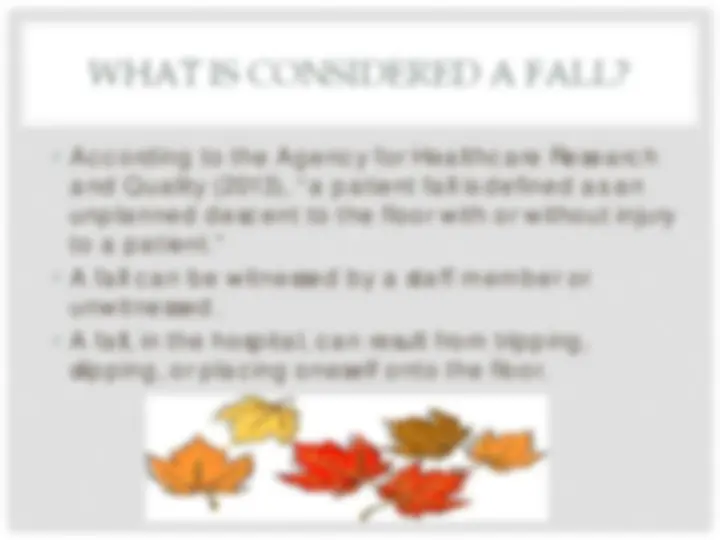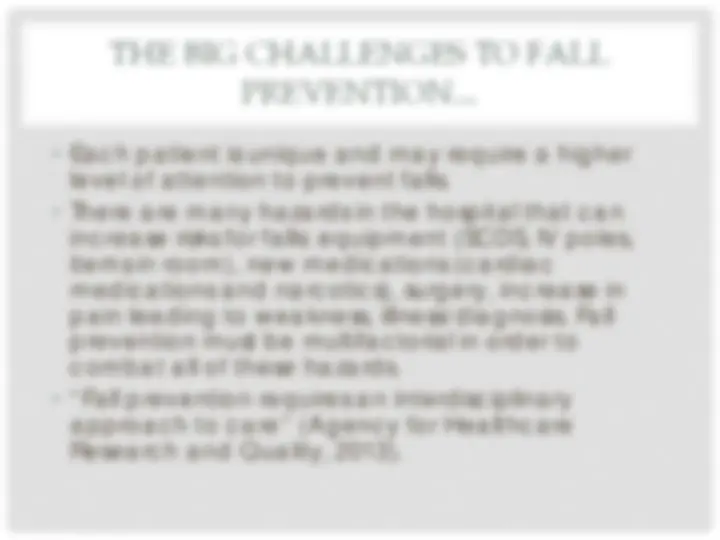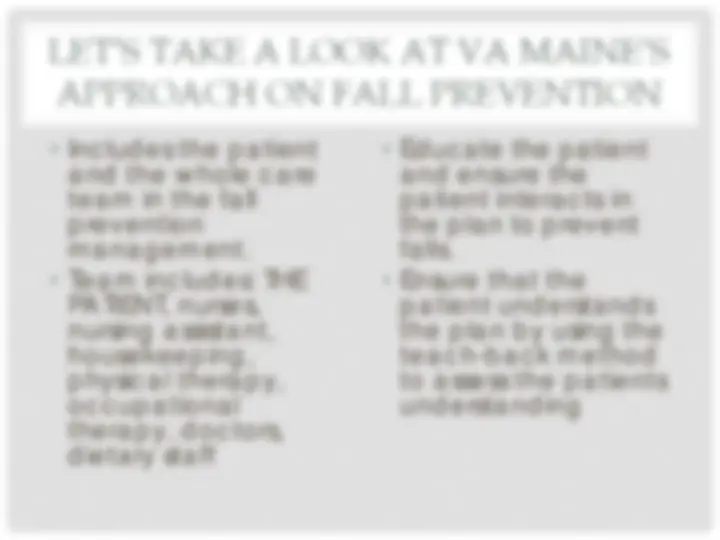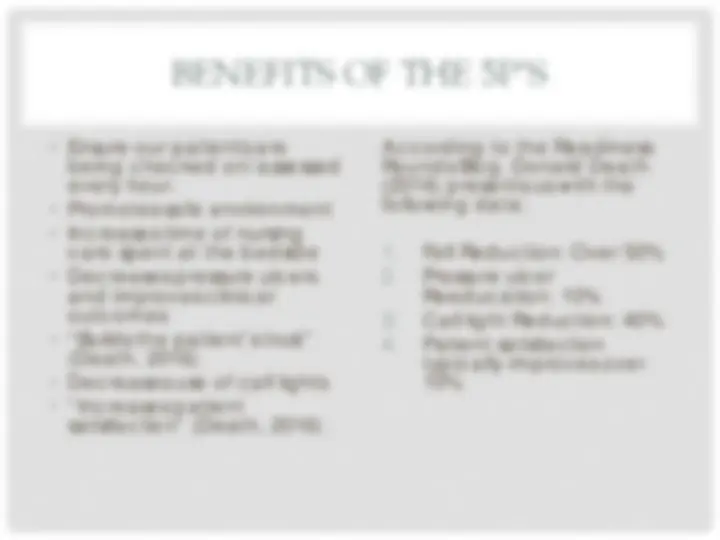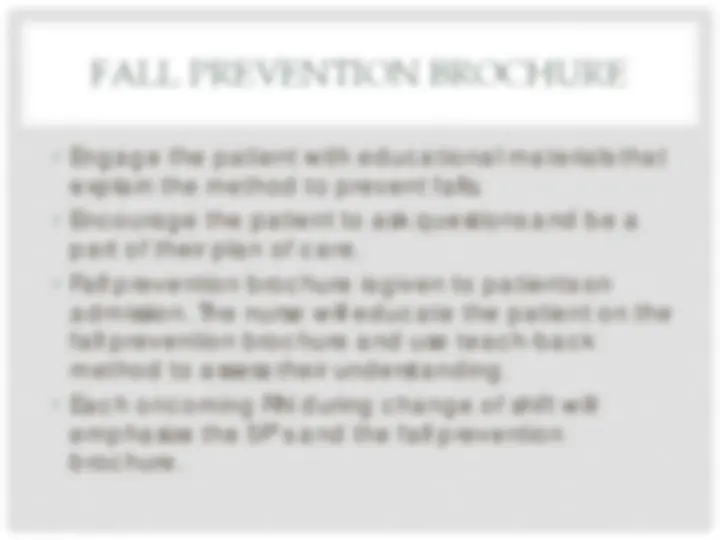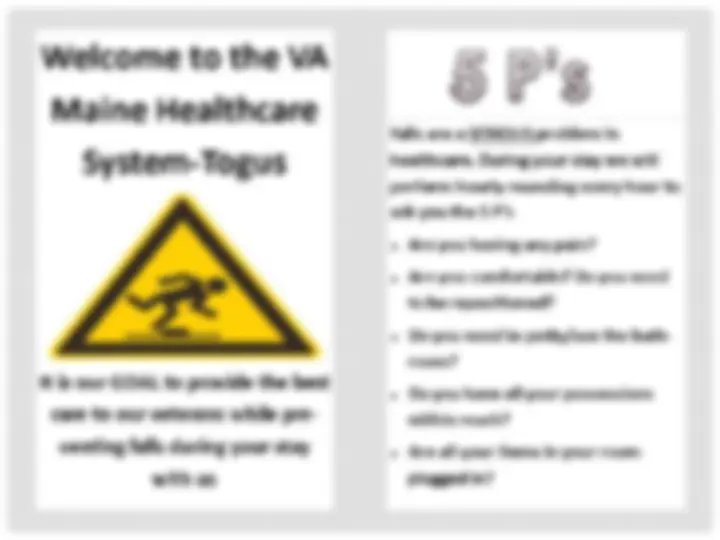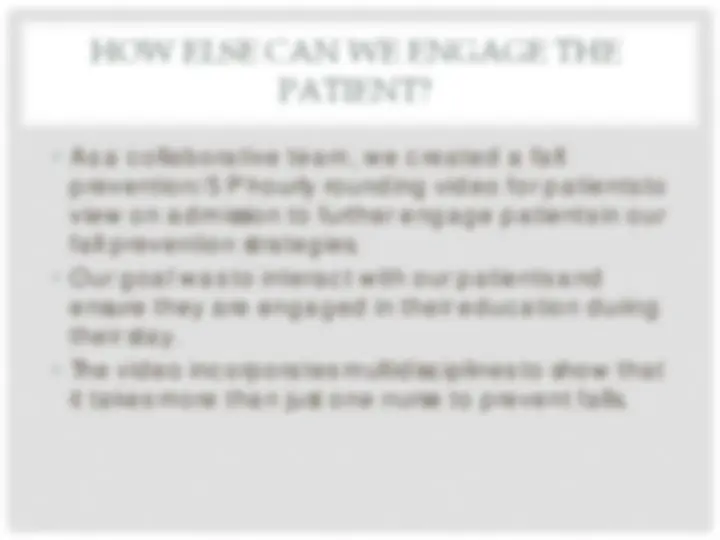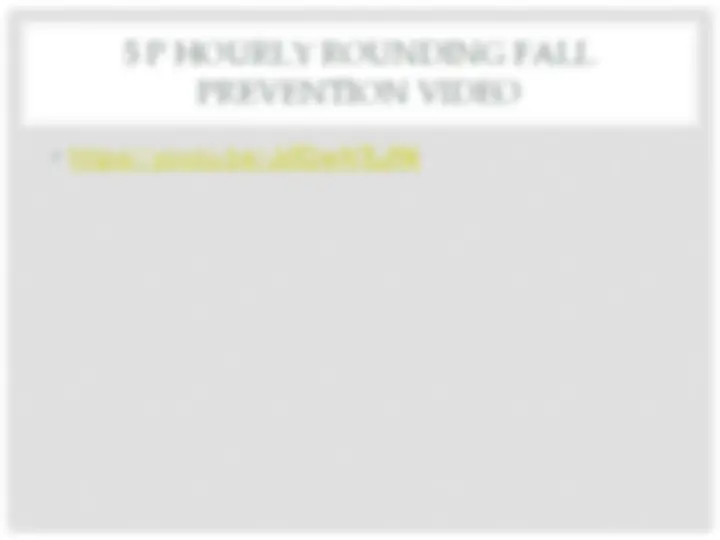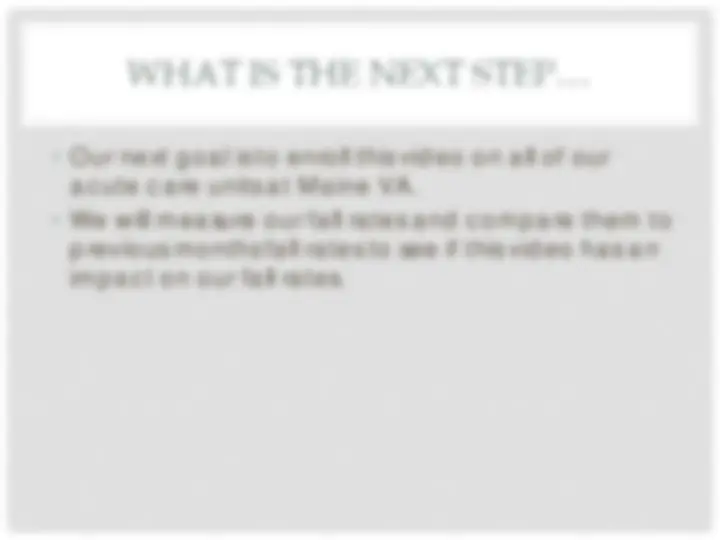Download 5Ps of Hourly Rounding: Fall Prevention in Hospitals and more Study notes Nursing in PDF only on Docsity!
A S S E S S I N G T H E 5 P ’ S O F H O U R L Y R O U N D I N G
FALL PREVENTION
Katie Souviney, RN BSN and Jennifer Posnick RN
ARE FALLS REALLY A PROBLEM?
Here are the facts…
- Each year between 700,000 and 1,000,000 people in the United States will fall in a hospital setting (Agency for Healthcare Research and Quality, 2013).
- A fall can result in injury including fractures, brain bleeds, lacerations, internal bleeds, and loss of self esteem.
- Research shows that close to 1/3 of falls can be prevented in the hospital (Agency for Healthcare Research and Quality, 2013).
THE BIG CHALLENGES TO FALL PREVENTION...
- Each patient is unique and may require a higher level of attention to prevent falls.
- There are many hazards in the hospital that can increase risks for falls: equipment (SCDS, IV poles, items in room), new medications (cardiac medications and narcotics), surgery, increase in pain leading to weakness, illness/diagnosis. Fall prevention must be multifactorial in order to combat all of these hazards.
- “Fall prevention requires an interdisciplinary approach to care” (Agency for Healthcare Research and Quality, 2013).
LET’S TAKE A LOOK AT VA MAINE’S
APPROACH ON FALL PREVENTION
and the whole care
team in the fall
prevention
management.
PATIENT , nurses,
nursing assistant,
housekeeping,
physical therapy,
occupational
therapy, doctors,
dietary staff
and ensure the
patient interacts in
the plan to prevent
falls.
patient understands
the plan by using the
teach-back method
to assess the patients
understanding
WHAT ARE THE 5 P’S
- The 5 P’s of hourly rounding that we assess/ask the patient at the Maine VA are the following: - Are you having pain?
- Do you need to potty /use the bathroom?
- Do you have all your personal belongings within reach?
- Do you need to be re positioned?
- Are all your pumps and items in your room plugged in?
BENEFITS OF THE 5P’S
- Ensure our patients are being checked on/assessed every hour.
- Promotes safe environment
- Increases time of nursing care spent at the bedside
- Decreases pressure ulcers and improves clinical outcomes
- “Builds the patient’s trust” (Death, 2016).
- Decreases use of call lights
- “Increases patient satisfaction” (Death, 2016).
According to the Readiness Rounds Blog, Donald Death (2016) presents us with the following data:
- Fall Reduction: Over 50%
- Pressure ulcer Reeducation: 10%
- Call light Reduction: 40%
- Patient satisfaction typically improves over 10%
HOW ELSE CAN WE ENGAGE THE PATIENT?
- As a collaborative team, we created a fall prevention/5 P hourly rounding video for patients to view on admission to further engage patients in our fall prevention strategies.
- Our goal was to interact with our patients and ensure they are engaged in their education during their stay.
- The video incorporates multidisciplines to show that it takes more than just one nurse to prevent falls.
5 P HOURLY ROUNDING FALL PREVENTION VIDEO
- https://youtu.be/JsTQwNTLJR
REFERENCES
Agency for Healthcare Research and Quality. (2013,
January 31). Preventing Falls in Hospitals. Retrieved August 1, 2017, from https://www.ahrq.gov/professionals/systems/hospital/ fallpxtoolkit/fallpxtkover.html
Death, C. D. (2016, July 20). Readiness Rounds Blog. Retrieved August 5, 2017, from https://www.readinessrounds.com/blog/the-5-ps-of- rounding-the-foundation-of-patient-satisfaction

